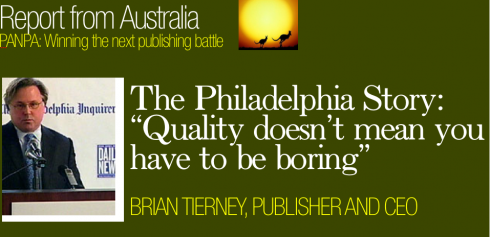
Against the backdrop of a giant poster of the movie The Philadelphia Story-—that classic 1940 George Cukor romantic comedy starring Katharine Hepburn, Cary Grand and James Stewart—the dynamic Brian Tierney, publisher of The Philadelphia Inquirer, commanded the stage with gusto as he delighted an audience of more than 350 editors and publishers from 23 countries at the annual conference of PANPA (Pacific Area Newspaper Publishers Association).
The title of the conference, in which I also participate as a speaker, is Winning the Next Publishing Battle. Indeed, Brian indicated that he and his team are winning the publishing battle, and he went on to show them how he does it.
I was a speaker in this same program, but I was particularly interested in Brian Tierney’s speech, as I worked with The Inquirer’s team on an earlier redesign of the newspaper almost 20 years ago.
“The Philadelphia Inquirer was number one in circulation gains in 2007,”
Brian said. “We are number one, and it does not get any better, but our own newspaper put the story on Page 5 of the business section. We have to be able to tell our own success story. It is an industry that has trouble telling its own story.”
Brian came to The Inquirer two years ago. His revolution inside The Inquirer has been profound, and it began a day after he moved in as publisher with a change that was small but significant: They had the reference to the online edition almost disappearing on Page One. One could barely see that there was an online edition at all. Instead, he replaced that line with a visible and punchier “philly.com” logo right on the newspaper’s nameplate.
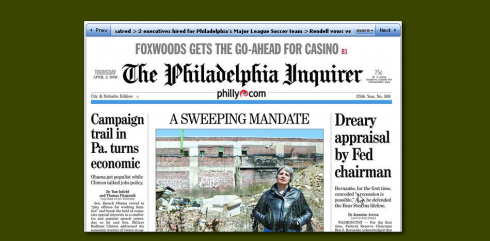
“There were 18 people working on phylly.com when I arrived, generating $1 million in banner ads. Today, we have 70 people working on phylly.com, generating $16 million in banner ads.”
Brian says that it has not been easy turning around The Inquirer, a newspaper with a rich journalistic history—-founded in 1829, it is the third oldest in the country.
“I believe that in newspapers, the business side has let down the journalistic side.”
He was quick to point out that many editors have the wrong idea of what the newspaper exists to do.
“I am new to newspapers, I admit. I came from the world of adverrtising, so I know that you can’t bore people into buying you. I had been at The Inquirer barely two days when an editor told me in a meeting that we need to give readers what they need, not what they want. That’s stupid, I said. Well, that editor does not work here anymore. I also think that the idea of one newspaper that is for everybody does not work anymore. Different strokes for different folks. People want choices.”
Highlights of Brian Tierney’s inspiring talk to the PANPA publishers and editors:
ON INDUSTRY STRENGHTS:
“Embrace our incredible strengths. We have an incredible armament of assets, starting with the brand. Our greatest assets is journalists. We also know the community like nobody else. We are in a unique position to relate to advertisers. But we must go out and offer them variety. At The Inquirer we created a team whose function is to adapt advertising from other media—-such as television—and design it for newspapers. We show these models to advertisers as possibilities of what could be. When we do, they buy it.”
ON RECRUITMENT:
“We are hiring journalists at the Inquirer. Look outside of the industry for talent. Get them from radio, magazines, advertising, not just necessarily newspaper people.”
ON CONTENT
: “It is important that journalistic quality remains high—-but that does not mean you have to be boring.”
WHAT’S NEW AT THE INQUIRER:
“Women 35-years-old and older are a large part of our target audience, so we have a new magazine called “I” aimed at women: it is all about fashion, clothing, and topics of interest to women, a product advertisers will want to see themselves in.”
PARTING SHOT:
“Promote, promote, promote. Try to sell your readers something else when they visit your store.”

From Mark Hollands, Chief Executive, PANPA:
“Newsprint consumption is the highest in Scandinavia and Germany today, the lowest in the United States.”
From Juan Señor, Partner, Innovation Consulting:
“We must go from great newspapers with great websites to great websites with great newspapers.”
![]()
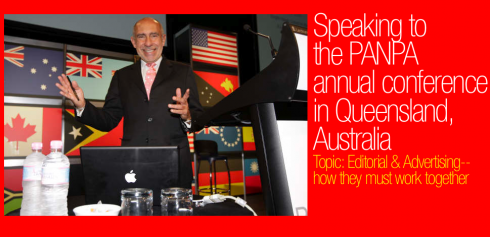
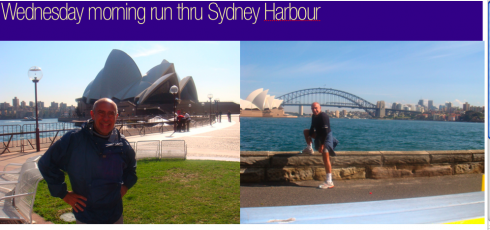
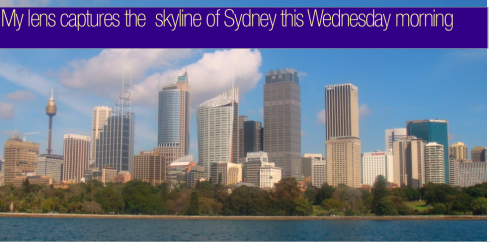
Now in scenic Sydney, Australia, running around the iconic Sydney Opera House, located at Bennelong Point in Sydney Harbour, close to the Sydney Harbour Bridge. The building and its surroundings are one of the best known icons of Australia. It is springtime here: sunny and cool. The waves on Bondi Beach are high and the water still too cold for swimmers. The view is spectacular from any angle here.
TheMarioBlog posting # 88